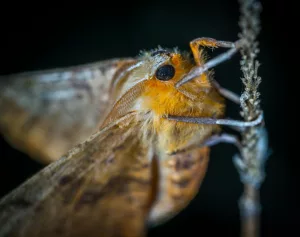The soothing sound of crickets chirping on a summer night is a common experience for many. But have you ever wondered what causes this enchanting symphony of nature? Crickets produce their signature sound by rubbing their wings or legs together in a process called stridulation. This action creates vibrations that result in the distinctive chirping noise.
The Role of Male Crickets
Interestingly, it is primarily the male crickets that produce the chirping sound as a means of communication. Male crickets use their chirps to attract females for mating and to establish their territory. The frequency and pattern of the chirps can vary depending on the species of cricket and environmental factors such as temperature. Male crickets invest a significant amount of energy into producing their chirping sound, as it plays a crucial role in their reproductive success and social interactions within the cricket community.
Territorial Calls and Mating Songs
Male crickets are known to produce different types of calls, each serving a specific purpose. Among these, the two most important are the territorial call and the mating song. The territorial call is a loud and repetitive chirp that warns other males to stay away, effectively marking the boundaries of the cricket’s territory. Meanwhile, the mating song is typically more complex and is designed to attract females by showcasing the male’s fitness and genetic quality. A well-executed mating song can significantly increase a male cricket’s chances of reproducing.
Energy Investment in Chirping
Crickets expend a substantial amount of energy producing their calls. This investment is critical, as a strong, persistent call can mean the difference between finding a mate and failing to reproduce. In fact, the act of chirping is so energy-intensive that male crickets may prioritize it over feeding, demonstrating the call’s importance to their life cycle. Understanding this energy trade-off offers insight into the biological imperatives driving these insects.
Temperature and Chirping
The relationship between temperature and the frequency of cricket chirping is a fascinating aspect of their behavior. As ectothermic creatures, crickets are highly sensitive to temperature changes. In general, crickets tend to chirp more frequently in warmer weather as the higher temperatures increase their metabolism and energy levels. The temperature also affects the speed at which crickets can rub their wings or legs together, influencing the pitch and tempo of their chirping. Therefore, temperature serves as a key environmental factor that influences the acoustic activity of crickets.
Dolbear’s Law
A particularly interesting phenomenon related to temperature and chirping is Dolbear’s Law, which offers a formula for estimating temperature based on the frequency of cricket chirps. It suggests that by counting the number of chirps in a 14-second period and adding 40, you can approximate the temperature in Fahrenheit. This relationship underscores the intricate connection between a cricket’s physical environment and its biological processes.
Seasonal Variations
Crickets also adjust their chirping behavior according to the season. During the warmer months, chirping is more frequent and intense, as these conditions are more conducive to mating. In contrast, as temperatures drop, cricket activity diminishes, illustrating the profound impact of seasonal changes on their behavior. This seasonal variation is crucial for understanding patterns in cricket populations and their interaction with the environment.
Circadian Rhythm
Another intriguing factor that influences cricket chirping is their circadian rhythm. Crickets are more active and chirp louder during specific times of the day, such as dusk and dawn. This behavior is closely tied to their internal body clock, which regulates their physiological processes and activity levels throughout the day and night. The circadian rhythm of crickets is linked to their natural behavior patterns, ensuring that they are most vocal and active during the times when communication and mating opportunities are optimal. This rhythmic chirping behavior showcases the intricate synchronization of biological processes within cricket populations.
Adaptation to Predation
Crickets have adapted their activity patterns to minimize the risk of predation. By chirping primarily during dusk and dawn, they take advantage of low-light conditions, making it harder for predators to spot them. This adaptation highlights the evolutionary pressures that shape cricket behavior, ensuring their survival and continued reproduction. Such insights into their circadian rhythm reveal the delicate balance crickets maintain between attracting mates and avoiding threats.
The Science of Stridulation
The mechanism behind cricket chirping, known as stridulation, involves a specialized structure on the cricket’s wings. The wings have a file-like structure called the “file” and a hardened edge called the “scraper.” When the cricket rubs these parts together, it produces sound waves that we hear as chirping. This complex mechanism is a marvel of natural engineering, allowing crickets to produce a wide range of sounds.
Evolution of Wing Structures
Over time, crickets have evolved their wing structures to optimize sound production. Different species have developed unique file and scraper configurations, resulting in distinctive sound patterns. This variation is not only a testament to the adaptability of crickets but also an important factor in species identification and mating. Researchers studying cricket wings have uncovered fascinating insights into the evolutionary pressures that have shaped these insects’ communication strategies.
Environmental Influences
Beyond temperature, several other environmental factors can influence cricket chirping. Humidity, for instance, can affect the sound quality and distance traveled by the chirps. High humidity levels, often present during summer nights, help amplify the sound, making it easier for potential mates to hear. Additionally, the presence of vegetation and obstacles can either dampen or enhance sound transmission, affecting how far a chirp can travel.
Impact of Urbanization
Urban environments present unique challenges and opportunities for crickets. Noise pollution from traffic and human activity can interfere with cricket communication, forcing them to adapt by altering the frequency or timing of their calls. Some studies have shown that crickets may chirp at higher pitches in urban areas to distinguish their calls from low-frequency background noise. These adaptations highlight the resilience of crickets and their ability to thrive in diverse environments.
Human Interaction and Appreciation
Humans have long been fascinated by the sound of crickets, often associating their chirping with peace and tranquility. In many cultures, crickets are considered a symbol of good luck and prosperity. The sound of crickets is frequently used in media to evoke a sense of calm or to signify solitude and reflection. This cultural significance underscores the deep connection between humans and the natural world, as well as our ability to find meaning and beauty in the simplest phenomena.
Crickets as Biological Indicators
Crickets also serve as valuable biological indicators, helping ecologists assess the health of ecosystems. Changes in cricket populations and behavior can signal shifts in environmental conditions, such as pollution or climate change. By studying these patterns, scientists can gain insights into broader ecological trends and make informed decisions about conservation efforts.
Common Misconceptions
Despite their prevalence, there are several misconceptions about cricket chirping. One common myth is that all crickets chirp, when in fact, only males produce the sound. Another misconception is that crickets are a nuisance; however, they play a vital role in the ecosystem by contributing to nutrient cycling and serving as prey for various predators. Clearing up these misunderstandings can enhance our appreciation for crickets and their ecological importance.
Misidentification with Other Sounds
Sometimes, other insects or environmental noise can be mistaken for cricket chirping. For instance, grasshoppers and katydids also produce sounds through stridulation but differ in rhythm and tone. Understanding these differences can enhance one’s ability to identify and appreciate the diverse soundscape of a summer night.
Practical Tips for Enjoying Cricket Sounds
If you’re looking to enjoy the sound of crickets, consider creating a welcoming environment for them in your garden. Planting native vegetation and reducing the use of pesticides can encourage cricket populations. Additionally, setting up a comfortable seating area outdoors can allow you to enjoy their symphony on warm evenings. Embracing these practices not only enhances your experience but also supports local biodiversity.
Conclusion
The sound of crickets at night is a fascinating phenomenon that is deeply rooted in the biological processes and behaviors of these remarkable insects. From the intricate mechanism of stridulation to the influence of temperature and circadian rhythm, there are numerous factors at play that contribute to the melodious symphony of crickets that we enjoy during warm summer nights. Understanding the complexities behind cricket chirping enhances our appreciation for the natural world and the intricate interactions that shape the soundscape of a serene summer evening.



